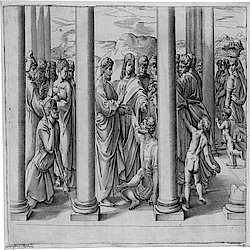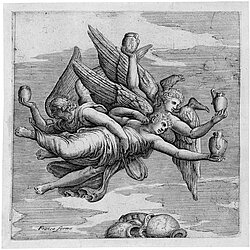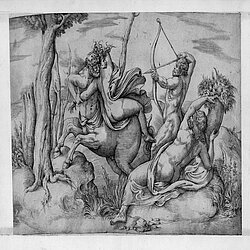Loading the page ...
Giovanni Battista Franco
called Il Semolei, c. 1510–1561, Venice
According to Vasari, Battista Franco went to Rome at the age of twenty in order to devote himself body and soul to the study of classical sculpture and the art of Michelangelo, whose formal canon was to exert a strong influence on him. The extensive corpus of surviving drawings testifies to the intensity with which the young artist pursued his further training. In Rome, Franco learned the engraver’s trade as well, although it is not known which master introduced him to the various printmaking techniques. His career as a painter, on the other hand, began in 1536 when Franco, under the guidance of such famous masters as Antonio da Sangallo and Vasari in Rome and Florence, was involved in preparing the festive decorations for the entry of the Hapsburg Emperor Charles V into these two cities. In view of his great versatility and mobility Franco’s artistic career was very varied. In Florence, Franco continued his training mainly as a draughtsman, while his acquaintance with such artists as Vasari, Ridolfo Ghirlandaio and Bartolommeo Ammanati brought him in commissions for Duke Cosimo I de’ Medici and Cardinal Francesco Coronaro in Rome. The year 1545 saw the artist in Urbino, where he entered the service of Duke Guidobaldo II della Rovere. In Urbino he made numerous designs for the ducal majolica manufactory in nearby Castel Durante. After another stay in Rome about 1549, where Franco figured as a member of the comedy company of the poet Giovanni Andrea dell’Anguillara while also continuing to be occupied with stage designs and fresco paintings, he moved back to his native city of Venice in the early 1550s. Franco’s skills as a painter and draughtsman soon brought him recognition and fame, leading to important commissions for churches and palazzi in the Serenissima.
Archive


